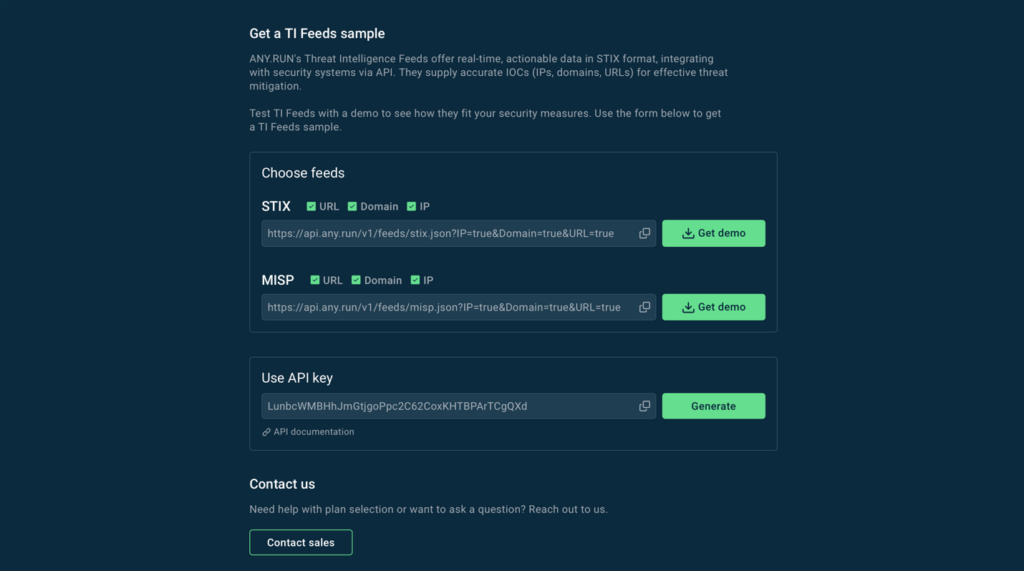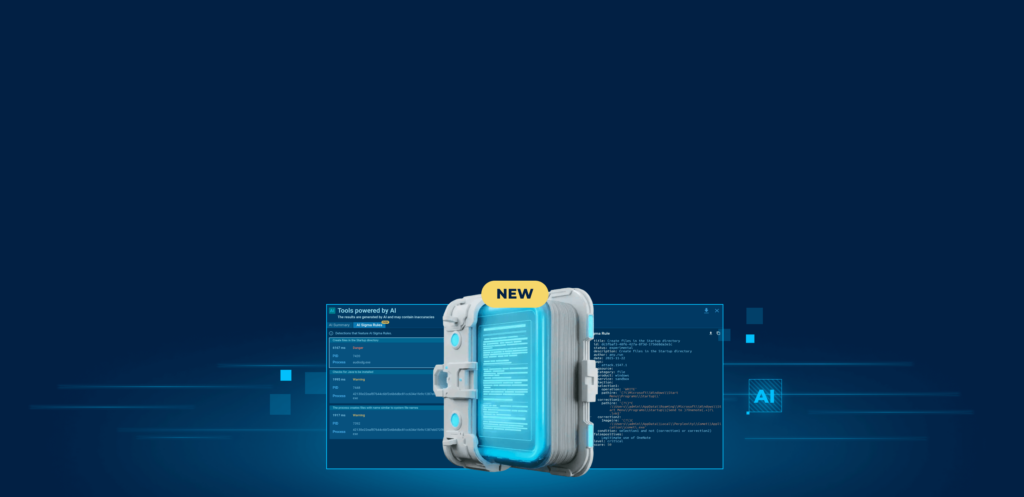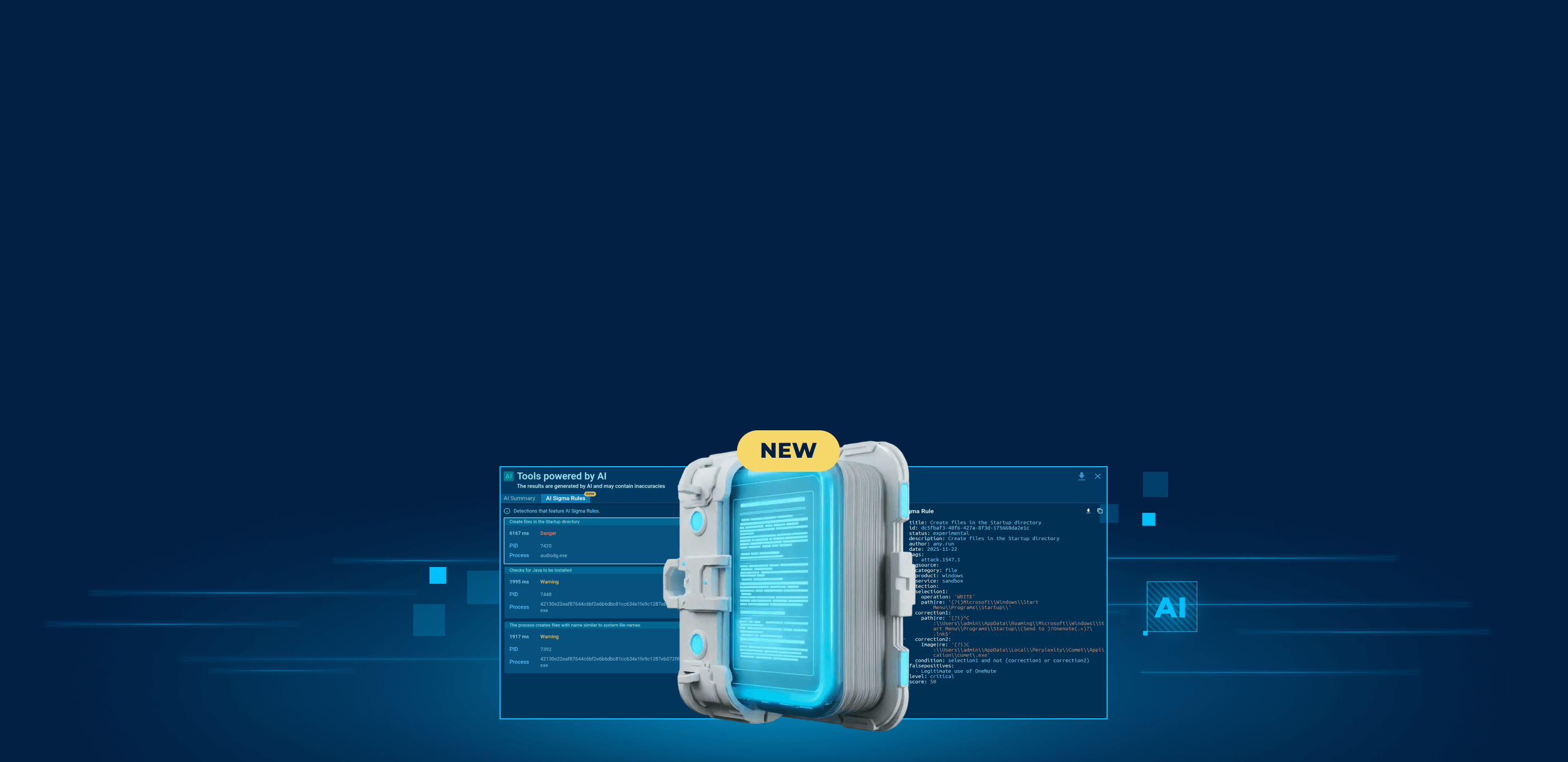Threat Intelligence Feeds from ANY.RUN provide a continuously-updated stream of the latest indicators of compromise. They enable SOC teams to quickly detect and mitigate attacks, including emerging malware and persistent threats.
But how do ANY.RUN’s feeds get enriched with fresh and, most importantly, unique indicators?
Let’s find out.
About ANY.RUN’s Threat Intelligence Feeds
ANY.RUN’s Threat Intelligence (TI) Feeds offer an extensive collection of Indicators of Compromise (IOCs) designed to enhance the threat detection capabilities of clients’ security systems. These feeds provide detailed information beyond the basics, including malicious IPs, URLs, domains.
Where does this data come from?
An international community of over 500,000 researchers and cybersecurity pros who upload and analyze real-world malware and phishing samples every day to ANY.RUN’s submissions repository.
With TI Feeds from ANY.RUN, organizations can:
- Expand and speed up threat hunting with enriched up-to-date indicators
- Enhance alert triage and prioritize most urgent issues
- Improve incident response thanks to better understanding threats and their behaviors
- Proactively defend against new and evolving threats
IOCs Provided by ANY.RUN TI Feeds
TI Feeds contain indicators along with additional info like the threat score, which signals IOCs’ reliability:
- 100: Highly reliable
- 50: Suspicious
- 75: Trustworthy
Here are the indicators you can find in ANY.RUN’s TI Feeds.
IP addresses
Compromised IPs instantly signal of cybercriminal operations, they are often linked to Command-and-Control (C2) servers or phishing campaigns. By analyzing IP addresses, cybersecurity teams can proactively block malicious traffic and analyze attack patterns and tactics.
Domains
Domains provide a higher-level view of malicious activity, often connecting multiple IPs or malware instances within a single campaign. ANY.RUN’s TI Feeds provide comprehensive information about domains, including all the details available for IP addresses, such as threat names, types, detection timestamps, and related file hashes.
URLs
URL addresses serve as gateways to distribute malware, execute phishing campaigns, or redirect users to malicious content. By analyzing URLs, cybersecurity teams can uncover attack patterns, block harmful traffic, and prevent unauthorized access to systems and data.
How ANY.RUN’s TI Feeds Are Enriched with Unique IOCs
There are several features of Threat Intelligence Feeds that make them stand out, one of them is the way we collect indicators. Here are the two methods we use to get the latest and the most accurate indicators that cannot be found elsewhere.
IOCs Extracted from Malware Configurations
Configurations are a crucial part of any malware sample. They contain hardcoded IOCs such as command and control (C2) server addresses, encryption keys, and specific attack parameters. ANY.RUN’s Interactive Sandbox can automatically extract configs for dozens of malware families and pull out these valuable indicators.
Take a look at this sandbox session.

By opening the MalConf window we can observe the extracted configuration of an AsyncRAT sample. One of the pieces of data found here is the malicious IP address used by the malware for communication with its C2 server.
ANY.RUN automatically extracts this crucial indicator and sends it to TI Feeds, which then get fed into the clients’ detection systems. This helps them identify the threat early and minimize its potential impact.
IOCs Detected with Suricata IDS Rules
Suricata rules focus on identifying patterns in network traffic rather than specific details like IP addresses or domains. This means Suricata can recognize threats even when attackers change their infrastructure.
Thanks to ANY.RUN’s extensive integration of Suricata IDS for traffic analysis, we can consistently extract fresh network indicators from the newest samples of evolving malware.
Check out this report, which shows analysis of a FormBook sample.

When we navigate to the Threats tab and click on one of the triggered Suricata rules, we can see that the system has detected a connection to a domain controlled by the attackers.

As you expect, this domain is sent directly to TI Feeds, strengthening our clients’ defense capabilities.
Integrate ANY.RUN’s TI Feeds

You can test ANY.RUN’s Threat Intelligence Feeds in STIX and MISP formats by getting a free demo sample here.
ANY.RUN also runs a dedicated MISP instance that you can synchronize your server with or connect to your security solutions. To get started, contact our team via this page.
About ANY.RUN
ANY.RUN helps more than 500,000 cybersecurity professionals worldwide. Our interactive sandbox simplifies malware analysis of threats that target both Windows and Linux systems. Our threat intelligence products, TI Lookup, YARA Search and Feeds, help you find IOCs or files to learn more about the threats and respond to incidents faster.
Get a 14-day free trial of ANY.RUN’s Threat Intelligence service →








0 comments